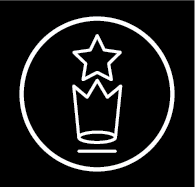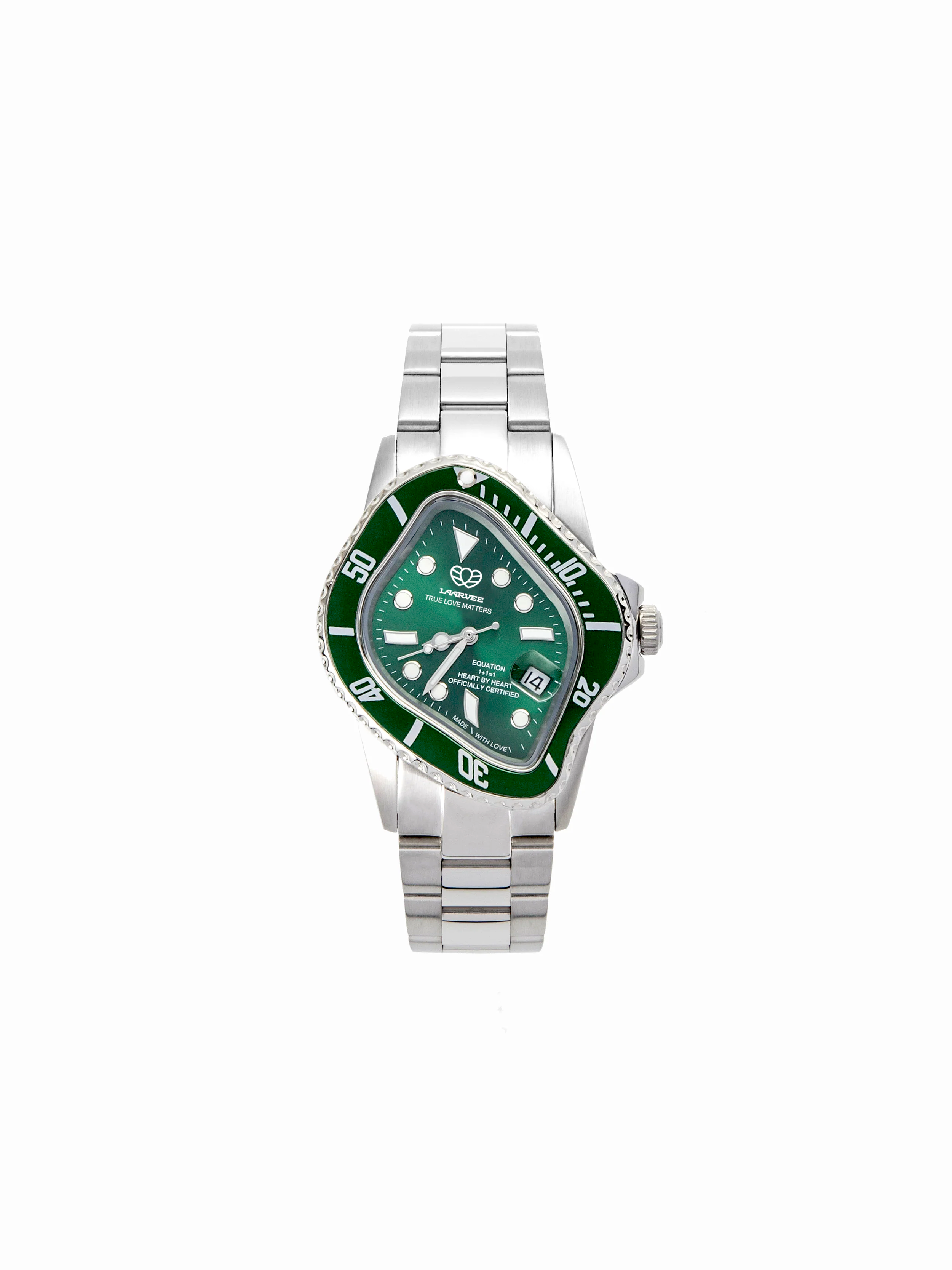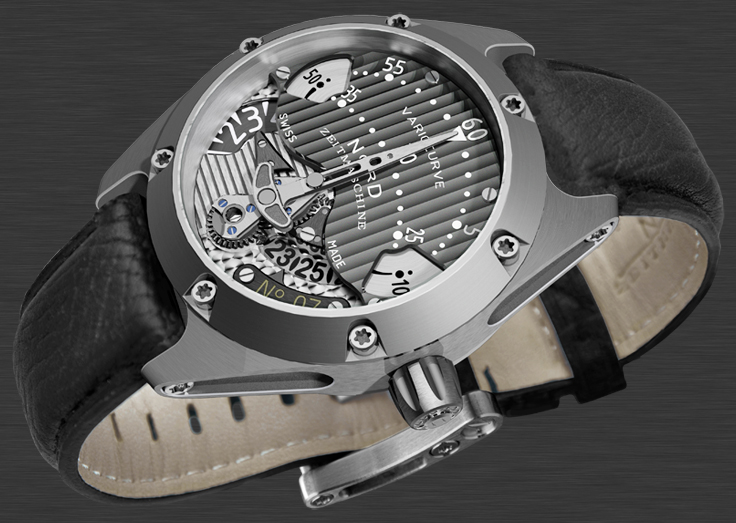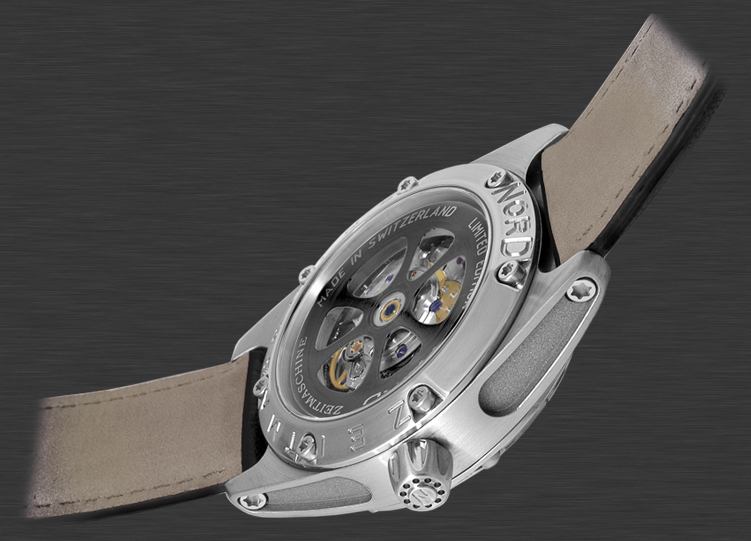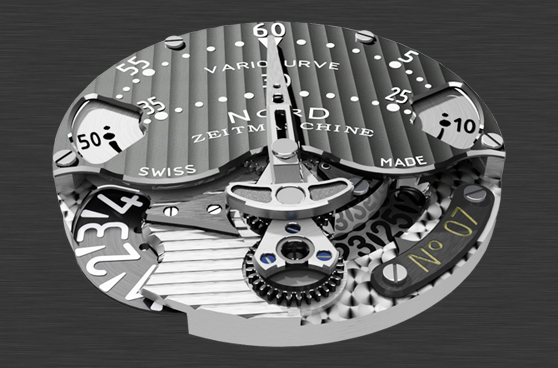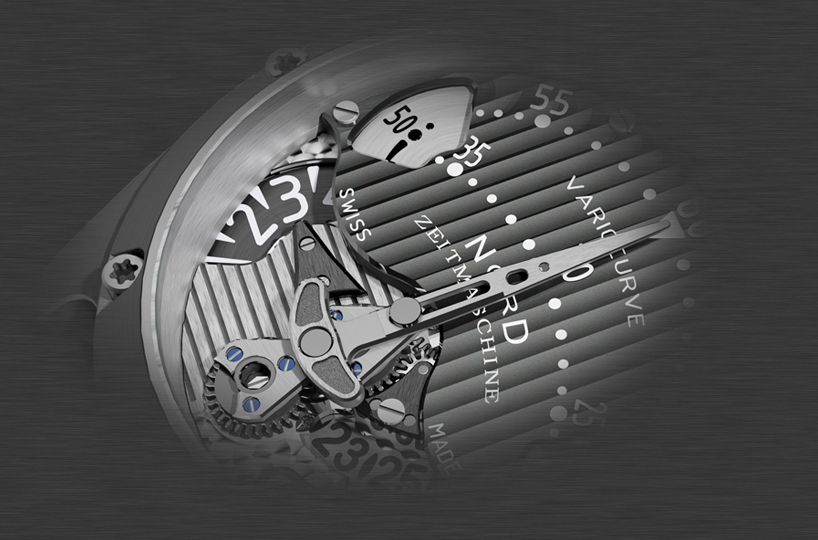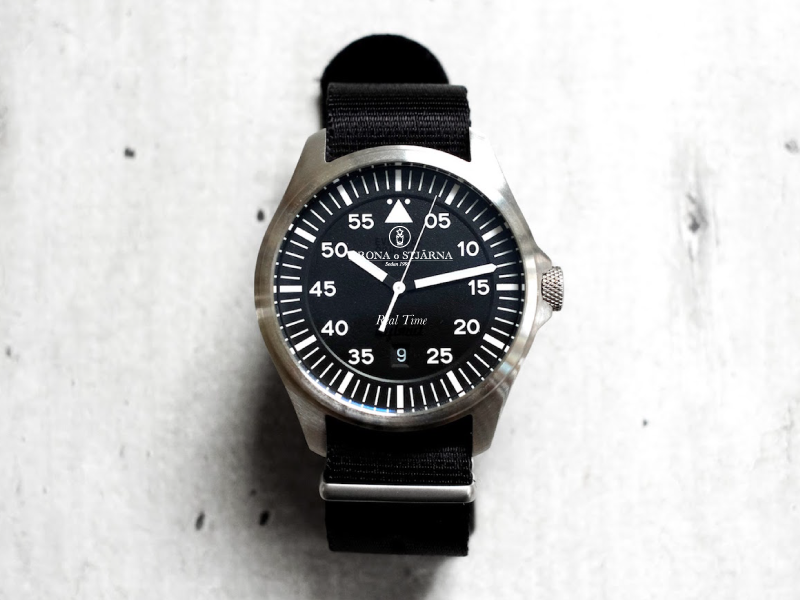The world is full of odd and interesting wristwatches with energy savers, generators, belt drives, mechanically driven, laser-cut, sand-cast and fabricated from the most exotic materials and jewels available. This particular piece, the "Variocurve" by Swiss manufacturer NORD uses a cam-like principle to sweep back and forth across the face of the watch for a seamless register of time in hours minutes and seconds.
Description by the Manufacturer
Daniel Nebel’s search for an innovative time display started from the premise that in most mechanical watches with decentralised hands, retrograde faces or disc dials, the displaying element (hand, disc, cage, etc.) always turned on a fixed axle. This means that the displaying element always shows the time on a steady, constant radius, which usually makes a complete revolution or, in the case of retrograde dials for example, a revolution of 120 degrees. Not having a fixed point for the attachment of the hand, therefore, appeared to him to be the solution for inventing a new kind of display. After many experiments with eccentrics and levers, he managed to create many different types of display, but ultimately these did not provide him with a satisfactory result, because the displays that emerged were either too small, were crossed in the middle, or were not visually attractive. Only the solution with the two opposing eccentrics, arranged decentrally on the watch, fulfilled the objective of an innovative time display that can be easily read. As soon as the correct proportions and lengths of the eccentric wheels and levers were calculated and laid in such a manner that the maximum hub (largest distance per minute) took place on the full hour, the kidney-shaped minute hand was born. However, after observing and simulating the display mechanism for a while, it became clear that, during the “dead point” of the eccentric, the hand only moved a short distance per minute in the area of ¼ to and ¼ past, with the disadvantage that the display resolution in these areas was not very large. Then, in a continued search for an improvement to this situation, two further display segments were built, which would “run counter to” the hand and thus solve the problem at ¼ to and ¼ past. The result: because the minute hand of the watch moves at different speeds during 60 minutes and since the watch has a display trajectory with varying curves, the name Variocurve was given to the watch. The Variocurve-mechanism is patented.
